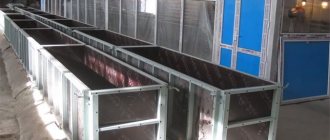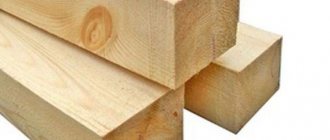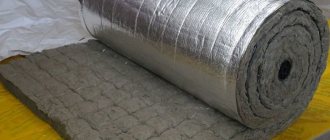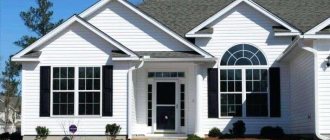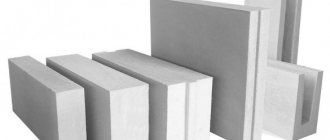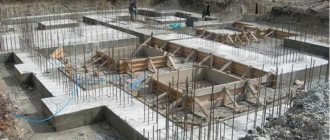External cladding performs several important tasks to protect and decorate the facade.
The most common cladding option is facing (facing) brick, a traditional material that does not lose its position.
There are several reasons for this sustainable use, but the main one is durability.
Unlike other types, facing brick literally creates armor around the house, capable of withstanding any atmospheric manifestations, mechanical or temperature influences.
Such properties place the material in the forefront among all similar types of cladding.
What is facing brick
Facing brick is a material intended for exterior decoration of houses, construction of fences or small structures - fences, gazebos, etc. The appearance of the briquette resembles an ordinary construction briquette, but with a greater bias towards decorative qualities .
Since one of the purposes of the material is to decorate the house, to create a solid and elegant appearance, the appearance of the briquette is significantly subordinated to these requirements. The front faces have a surface of a certain type, embossed or smooth.
The material is available in different color variations, from natural tones to painted in various shades.
In addition, the block must fulfill the geometry requirements. Dimensions and lines must be almost ideal, ensuring uniformity and proportionality of the masonry.
The materials from which facing bricks are produced are quite diverse, which gives a wide choice of types of material, and also allows you to combine it to obtain various decorative effects.
Pros and cons of clinker bricks
Clinker is one of the best representatives of facing bricks. It has excellent interdependent characteristics such as water absorption and frost resistance. These stones can withstand up to 300 freeze-thaw cycles (frost resistance coefficient F300). But the thermal conductivity is quite high: 0.7 W/(m*°C). Durability – at least 100 years.
Among the features of this material is the duration of its laying. This is due to the low water absorption coefficient. The stone slowly absorbs moisture from the mortar, so working with it requires a certain skill.
Production of clinker bricks
The disadvantages of this material include the fact that even in one batch of clinker bricks there are often products of different shades. This significantly complicates the masonry process and increases construction time. Workers have to select stones of identical color and most beautifully distribute those with a darker shade on the wall.
Clinker bricks require laying with special mortars. The cost of these compositions is high, as is the price of the material itself. It is possible to lay it on cement-sand mortar, but you need to know the recipe for preparing the mixture and be able to work with it. Clinker bricks “float” with regular mortar.
Price for clinker brick
Clinker brick
Advantages and disadvantages
Like any type of material, facade brick has its pros and cons.
The undoubted advantages include:
- High strength.
- Resistance to mechanical stress, wear resistance.
- Absolute immunity to fire.
- Temperature changes are indifferent to the material.
- Durability is incomparable to any other facing material.
- Moisture resistance.
- Ecological cleanliness, absence of harmful emissions.
The disadvantages, which, unfortunately, also exist, include:
- Large weight, creating additional load on the foundation, walls and other supporting structures of the house.
- The complexity of installation, the need for skills and experience.
- Self-installation is not accessible to everyone; it is difficult to work alone.
- Inconstancy of color caused by the difficulty of creating ideal firing conditions.
All the properties of the material are familiar to everyone, the shortcomings are familiar, easily removable and do not cause problems. Positive qualities more than cover all the disadvantages and cause high demand and consumer preference .
Pros and cons of hyperpressed bricks
The composition of hyperpressed brick includes shell rock, cement, and special additives.
Advantages of this type of stones:
- perfectly smooth geometric shape;
- identical sizes of all products of the same type;
- variety of colors;
- flexibility in processing (easy to saw);
- high strength 150-300 kg/cm2;
- water absorption 5-6%;
- frost resistance F150;
- wide range of shaped models.
Hyperpressed brick has virtually no disadvantages. The disadvantages include the heavy weight (4.2-4.4 kg), which affects the cost of transportation and the complexity of masonry.
Hyperpressed brick
Price for hyperpressed brick
Hyperpressed brick
Types and forms
First of all, the material should be divided into hollow and solid. For facing briquettes, the presence of voids is very important, as it facilitates laying, reduces pressure on supporting structures and helps retain heat. Solid samples are practically not used, with the exception of the hyper-pressed type, which, due to production conditions, is not hollow.
Facing bricks are available from various materials:
- Ceramic . This type is the most common, since the material for its production is clay, which is available in abundance. The production technology is quite simple - a molding mixture of clay with modifying additives is passed under pressure through special dies , which produces a long beam, in cross-section having the shape of a facing hollow brick. A special string machine cuts the timber into individual briquettes of different heights, after which the material is sent to a kiln for firing at high (1200-1400°) temperature. As a result of firing, the clay is sintered and acquires its working qualities - moisture resistance, strength.
- Clinker . This type of brick can be called ceramic, since the technology and raw materials are completely identical. The only difference is the firing temperature, which is up to 1900°, bringing the clay closer to the melting point. This treatment makes the brick very durable; it rings when tapped (hence the name: clinker in translation - ringing ). Absorption of moisture becomes almost impossible, the hardness is comparable to natural stone . The service life of clinker bricks lasts much more than 100 years and exceeds the service life of houses made from it. The disadvantages include the poor sound insulation of the material - the costs of high density, as well as some difficulty during installation - the material does not absorb water and “floats” a little when using ordinary cement mortar.
- Hyper pressed . This type of material differs significantly both in manufacturing technology and in appearance. The raw material for production is a cement-limestone mixture. The molded briquette is cured under high pressure. The result is a very dense, durable and very heavy material - such a block is only made solid, so its weight puts a significant load on the foundation and walls . The hyperpressed block is almost ideal in geometric terms - the lines and aspect ratios allow you to create very even, calibrated masonry. The working edge has a smooth or torn surface (called torn brick or torn stone), imitating a naturally chipped stone surface. In an array, such a surface looks very solid and has high design potential. The cost of the material is high, which is why it is not in great demand among consumers.
- Silicate . This type of brick is traditionally included in the lists of facing materials, although recently it has almost completely moved into the category of building materials. The reason for this lies in its instability to water - the material easily absorbs moisture, which is an unacceptable drawback for cladding. The material for making the silicate block is quartz sand with the addition of lime, which is why it is so unstable to water . From a decorative point of view, it is quite good - the white facing masonry looks elegant and festive, but the disadvantages outweigh it.
NOTE!
There is a special type of facing brick - figured. It presents a wide range of blocks of different shapes - with a beveled corner, semicircular, with a concave or convex surface. The purpose of such material is the design of architectural elements, the creation of independent decorations or facade decorative elements.
How to choose the right façade brick - step-by-step instructions
Finishing should be done last, but the overall design is drawn up at the construction stage. This is where many people have a lot of problems. The easiest way to solve them is to contact a professional designer. The main thing is to make the final choice regarding the shade (light, dark, textured). Next you will need:
Step 1. Calculate the approximate consumption of blocks (by quantity). It’s easy if you know the size of a standard facade brick – 250x120x25 millimeters (some are thicker, and some are “half”).
Calculation of block consumption
Step 2. Decide on available finance. Naturally, it is better to buy clinker bricks. But ceramics will cost almost ten times less .
Deciding on a budget
Step 3. Check out the offers in the nearest construction stores. Consider a design that matches the chosen tone (taking into account the price category). From all of them, select brands that will be “potential” options for purchase.
Choosing a design
Step 4. From the design options chosen, decide which brand of brick is more reliable and durable. Reviews on thematic forums will help with this It is possible to fully evaluate the quality of the material only after 3–5 years of its operation; there is no need to trust sellers “in words”.
Deciding on a brand
Important nuance! Accounting for the consumption of cement mortar should not be lower than the strength grade of the brick itself. For this reason, using hollow M250 or higher façade bricks is not the best option. All the finishing will cost no less than a high-quality solid M250 , but in the latter version the amount of work will be much less .
A popular brand in the Russian Federation is facing ceramic bricks from the Ryazan Brick Factory. The average cost of a block is from 7.5 to 11 rubles
What brands of facade bricks do experienced builders recommend using? Manufacturer brands Terca from the Safari, Trees, Nordic, Milano series. The brands No. are often distinguished from Muhr. 13, Canyon. The average price is from 50 rubles per block. If it is expensive, then it is better to consider Russian options - there are a lot of decent brands there at a price of 12 rubles per block and above (ceramic). of the Ryazan and Golitsyn are in demand .
If you want façade brick cladding, but finances simply don’t allow it, you should consider this option. Ceramic facade tiles
Prices for various types of glue Osnovit Maxiplix
Glue Osnovit Maxiplix
Video - How to choose the right brick for construction
Specifications
The parameters of facing bricks are varied, often individual, so we will consider the most average characteristics characteristic of most types of bricks:
- Sizes - 0.5 NF, 0.7 NF, NF, 1.5 NF. (NF is the standard size 250:120:65 mm. Options are different heights or widths of the briquette).
- Weight - 2-5 kg (depending on type and density).
- Density - 1000-1450 kg/m3
- Frost resistance - 50-150 cycles.
- Porosity - from 6% to 45%.
IMPORTANT!
Technical characteristics of materials of the same group, but produced at different enterprises, may differ. If you plan to use different types of cladding, the parameters of the materials should be clarified to eliminate the risk of inconsistency.
Some practical tips when choosing a brick
Now let's look at some practical tips that should guide you when choosing ceramic facing bricks.
They boil down to the following:
- Be sure to pay attention to the product manufacturer. Don't assume that all products are the same. GOST requirements are not always clearly indicated; the readings are often vague and indicate minimum and maximum values.
- That is, for example, products from one manufacturer may be characterized by frost resistance of 60 cycles, and from another - 100. However, both bricks meet the GOST requirements for this value.
- Since we have already touched on the topic of frost resistance, it is worth noting that this indicator is extremely important. The higher it is, the more resistant the products will be to atmospheric influences, and the longer they will last.
- When giving preference to one or another brand of strength, consider the recommended scope of application. Agree, you should not use low-strength bricks for cladding a house. It is best used in the construction of, for example, fence posts.
- The ratio of density and thermal conductivity also varies among different manufacturers. Be sure to read this information before purchasing.
- It is recommended to check the availability of quality certificates for products from the product supplier. This document indicates that the products have passed quality tests and fully comply with all technical requirements.
- Be sure to think carefully when choosing between hollow and solid products. As already mentioned, solid ceramic facing bricks have greater weight and greater density, but hollow bricks can significantly reduce the load on the base. Its ability to maintain temperature is higher.
- The color and texture of the products can be chosen at your discretion.
Color palette
The bulk of facing bricks are produced while preserving the natural color of the material; changes occur only at the firing stage. Different modes and temperatures give many color options - from light orange to almost black. This is used in the so-called. Bavarian masonry, when there are bricks of several colors in a chaotic order on the wall .
In addition, there is engobe brick. This is a material that is colored by applying a thin layer of thinner colored clay to work surfaces. After firing, the clay layer is sintered with the main body of the briquette, giving the surface a matte brown, dark brown, or black color. In addition, there are light-colored types of engobed brick made in a similar way.
Glazed brick is produced by painting the front surface in a certain color, followed by applying a layer of glaze (as an option, colored glaze is immediately applied) . The result is a brick with a working surface covered with a glassy layer of glaze, painted in a variety of colors - blue, green, red, etc.
Ceramic brick has a lot of color options - from white to black. Shades are obtained by using special types of clay and additives that enhance the color of the briquette.
NOTE!
The use of colored bricks has a strong decorative effect and allows you to create a unique look for your home according to your own design.
Photo of the color palette:
Construction of houses
55 votes
+
Vote for!
—
Vote against!
The scope of application of ceramic bricks is extensive. It is used for laying load-bearing walls, interior partitions, stoves, pipes, fence posts, etc. Ceramic facing bricks are made using a special technology, due to which it has not only an attractive appearance, but also high strength characteristics. It is used to cover both new houses and old buildings during reconstruction, giving them new life. In addition, it is also popular in interior decoration in modern loft style. The article will discuss the types of ceramic bricks, their properties and areas of use.
Advantages and disadvantages of ceramic bricks
- High strength and wear resistance. It has been tested for decades that it can easily withstand several freezing/thawing cycles, without losing its functions and external qualities.
- Soundproofing. Ceramic brick fully meets the requirements for sound insulation in residential premises.
- Moisture resistance . It practically does not absorb water, and after heavy rain it dries quickly.
- Environmental friendliness . In addition to the fact that it is made from natural materials and is safe for human health, it also has vapor-permeable properties, which allows you to maintain a favorable indoor microclimate, without the “thermos” effect.
- Highly durable . It has a density of 2000 kg/m3 and can be used in any climatic conditions.
- Variety of textures and colors. The method of its manufacture allows you to create beautiful cladding of facades, giving them the appearance of ancient mansions.
Types of ceramic bricks
Ceramic bricks are available in several versions and are intended for specific purposes.
Ordinary ceramic brick
- Its second name is construction. It can be full-bodied or hollow.
- In hollow ceramic bricks, voids should not exceed 13%. It can be used in the construction of walls and structures that will be subject to loads in addition to their own weight. This means that it is suitable for the construction of load-bearing structures or support pillars.
Tip: hollow brick retains heat better than solid brick. Therefore, when building a residential building from the latter, you need to take care of additional thermal insulation.
- For the construction of low private houses, it is most optimal to use the hollow option. They are less durable, but initially the design did not provide for large loads. But due to their fragility, it is not recommended to attach heavy objects to such walls. During construction, vertical or horizontal arrangement of cavities inside the brick is allowed. But horizontal voids are less preferable, as they negatively affect the strength characteristics.
Facing ceramic brick
- It is needed for the exterior decoration of buildings, which is why its second name is façade. Very high demands are placed on its appearance: clear geometry, even, uniform color, surface without defects.
- In most cases, facing bricks are made hollow, which reduces the load on load-bearing walls and provides good thermal insulation.
There are several types of facing ceramic bricks on sale:
- ordinary . It has a simple and smooth surface, strictly rectangular in shape. It is not painted additionally; the color is obtained due to a certain firing temperature and the time it takes. This method ensures that the cladding will not lose its beautiful appearance for many decades. The only disadvantage is the high cost;
- glazed _ After the clinker brick is fired, it is coated with glaze. The strength of this coating is achieved by the main component – fusible glass. After repeated firing, the frost-resistant properties of the material increase;
- with engobe . It looks most impressive, as it imitates natural stone. A decorative layer of white clay with the addition of dyes is applied to a ceramic brick base. The result is a two-layer stone, which is also called engobed brick;
- textured _ Suitable for finishing certain elements, such as window openings or door arches. It will burn in different shapes and textures. Often imitates wood or aged stone
Ceramic brick video
Characteristics of ceramic bricks
Due to its unique characteristics, ceramic brick still remains in demand and sometimes irreplaceable building material. It is subject to strict requirements for compliance with GOSTs 7484-78 and 530-2007.
- A solid brick should weigh 3 – 4 kg. Due to the absence of cavities, it has high strength. It also has soundproofing and heat-intensive properties. Therefore, it is recommended for the construction of foundations, basement and first floors, stoves and fireplaces, load-bearing walls and supports. And when laid on edge, it forms a thin but durable interior partition.
- Hollow brick . It has rectangular or round voids. The weight of the brick is between 2 and 2.5 kg. And the permissible number of voids as a percentage should not exceed 15%. It has higher thermal insulation qualities, but its strength is much lower. Therefore, it is recommended for the construction of only walls of low-rise buildings and internal partitions. Do not use in high humidity areas such as basements or foundations. Water entering the cavities fills them and leads to the destruction of the material. It is also not suitable for laying stoves. The presence of voids will lead to uneven heating of the material and to its possible destruction.
By size, ceramic bricks are divided into:
- double with dimensions 25x12x13 cm. It is made only hollow, less mortar is required when laying;
- single 25x120x6.5 cm. Its size and weight are designed to make it as convenient as possible to take it with one hand, while placing the solution with the other;
- one-and-a-half 25x12x8.8 cm. It is only available hollow, due to the reduction in weight and the required mortar, the cost of masonry is reduced.
The brand of ceramic brick contains the abbreviation “M”, which means a characteristic of its compressive strength:
- M175 and M150 - intended for basement floors and foundations;
- M125 - suitable for the construction of load-bearing walls of low houses and arched openings;
- M100 and M75 – for load-bearing walls and partitions;
- M50 - for structures on which there is no load.
The brand of brick must be indicated in the house design. The higher it is, the stronger and denser the material, and therefore the higher its weight.
- The thermal conductivity coefficient directly depends on the presence and number of voids. So, for solid material this value is in the range of 0.5 - 0.9 W/m x deg C. And for hollow material it is from 0.3 to 0.5 W/m x deg C. For central Russia and the northern regions, when external walls are up to 100 cm thick, additional insulation is required.
- Frost resistance . This is an indicator that indicates how long the material can withstand the freezing-defrosting cycle without losing its qualities. The values vary greatly depending on the density of the brick. For laying external walls, material F50 is used. Particularly durable ceramic facing bricks have a value of F150. Material with F25 indicators is used only for internal walls.
- Moisture resistance . The material must have low water absorption. For solid brick, no more than 13-15% of water should be absorbed relative to the weight of the material after it has been in water for 2 days.
- Color . It directly indicates the quality of the material. There is a special reference color that is approved by the factory where the brick is produced. Bricks made from clay are red in color, but after firing this color is called "brick".
Tips for purchasing ceramic bricks:
- Having decided on the house design and the desired brand of brick, you need to ask the seller for a certificate of conformity with the product to GOST and the declared brand;
- It is advisable to inspect several bricks from the batch for chips, cracks or uneven color. If they are found, you should not buy such material;
- When you tap on a brick, which is held with one hand, the sound should be clear.
Wall cladding with ceramic bricks
Mortar for laying facing ceramic bricks
Facing bricks are directly influenced by the environment. Special attention is paid to the masonry mortar, since it must withstand frost, heat and moisture equally well for many decades. Therefore, it is worth highlighting the main important requirements:
- high adhesive qualities . The main condition is strong adhesion of the facing brick to the walls of the house. This is achieved due to the porosity of the material. But clinker facing bricks are distinguished by their high density, as a result of which a simple solution based on cement and sand becomes unsuitable;
- strength . The finished cladding is heavy, and in order to avoid cracking of the seams, the set mortar must have high compressive strength properties. Even at the laying stage, the seams should be uniform and not pressed under the weight of subsequent rows;
- the masonry mortar must be well mixed , and no excess water should be released during work;
- the finished solution should dry evenly ; setting too quickly (less than an hour) indicates a technological violation;
- since the finishing cladding of the walls of the house is being carried out, the decorative qualities of the masonry joints must be at their best;
- the seams must remain unchanged at all times of the year and in all weather conditions. It is especially important that it serves as an obstacle to the formation of efflorescence on the masonry .
Of course, even taking into account all the above requirements, you can make such a solution yourself. But if it fails, it will be impossible to redo anything. Even experienced experts recommend buying special compounds, especially when it comes to cladding with clinker bricks.
Is it worth doing wall cladding with ceramic bricks yourself?
The temptation to do this work and save a decent amount of money is very great. But if you look at it, facing a house with brick is the most difficult stage of the work. To make the masonry beautiful and durable, a lot of experience is required. In addition, the cost of facing ceramic bricks is high, as is the price of masonry mortar, which meets all technological requirements.
Based on all of the above, it becomes clear why professional construction teams charge a high price for this work.
- It is very important to do everything in one summer, without leaving the masonry unfinished until next year. But this work is slow. For clarity, let's give an example. Let’s take the walls of a house, the area for cladding is 300 m2. A professional bricklayer, working with an assistant to carry the bricks and mortar, will be able to lay approximately 300 standard-sized bricks per day. This is slightly less than 6 m2. It turns out 300/6=50 days. But taking into account that there are only 5 working days in a week, then 50/5 = 10 weeks. In rainy weather, you cannot work with the solution. Therefore, in the most optimistic scenario, they set aside 20% for rainy days, which turns out to be 10*1.2=12. So, an experienced masonry worker with a helper will need at least 3 months to build such a house.
- Even with golden hands, the owner of a house without proper practice will not be able to lay more than 100 bricks per day, which means the work will stretch over 3 seasons. The brick must be purchased immediately, since it may differ in color from different batches. Therefore, you will have to consider the conditions for storing this expensive material for two winters.
Therefore, if we decide to cladding the house with ceramic bricks with our own hands, we need to carefully calculate our strengths so that the construction does not develop into a long-term headache.
Questions and answers about facing bricks
- Is it necessary to do tedious wall cladding? Ceramic facing bricks are designed not only to improve the external decorative qualities of a building, but also to increase its service life by protecting load-bearing walls from negative atmospheric influences.
- Is it possible to lay ceramic bricks at sub-zero temperatures? It is forbidden. The fact is that in cold weather the brick does not have sufficient water absorption and simply will not absorb the required amount of moisture from the tub mortar. If during ordinary masonry salt is simply added to the solution, which prevents rapid freezing, then in the case of facing material this is excluded. In the future, due to such an additive, white efflorescence may appear on the walls of the house.
- How to calculate the amount of facing bricks? First, measure each wall of the house separately, its width and height. Window and door openings are subtracted from the resulting area. The area of bay windows, verandas or porches is calculated separately. Taking into account masonry joints, 52 bricks are needed per 1 m2 of wall. Therefore, the resulting area is summed up and multiplied by this number.
Installation of ceramic bricks
First you need to decide on the type of masonry. The appearance of the finished walls and the technological process depend on this. If there is little or no experience in such work, then it is better to choose the simplest technology, for example, facial technology. The most difficult masonry technique is called “stacked”; it is better to avoid it when working independently.
Necessary tools for facing brickwork
- trowel;
- hammer-pick;
- cord;
- Bulgarian;
- for leveling corners, metal rods with a diameter of 10 cm;
- building level;
- anchor;
- wire for fixing the cladding to the load-bearing wall.
Stages of work
- The protrusion of the foundation of the house serves as the base on which the facing brick will be laid. It needs to be cleaned of debris and dust. After this, check the horizontal level; if there are deviations, formwork is made and leveled with mortar.
- Prepare a solution. If you have not purchased a special mixture, then you will have to mix all the proportions yourself using a concrete mixer. They use dark river sand, which has a finer fraction. It is mixed with M500 cement in the proportions indicated by the manufacturer on the pack. When the dry ingredients are evenly mixed, gradually add water without ceasing to knead. Do this until the solution reaches a homogeneous plastic consistency. Taking it in your hands, it should not crumble.
- Before work, it is advisable to place the bricks in water. Then take it out, lay it in a row and check its horizontal evenness with a level. The procedure is repeated with each brick.
- The first row is laid directly on a waterproofed foundation. Only vertical seams are fastened with mortar. In most cases, the length of the foundation does not correspond to the size of the masonry row. Therefore, the outermost brick should be trimmed.
- A ventilation gap of 3 cm is left between the facing row and the wall of the house.
- When the first row is completed, they begin to lay out the corners several rows up at once. They are the ones who will guarantee that the masonry will be done correctly. If the geometry of the corners is violated, the entire cladding will have a curvature, so this is the most crucial moment.
- To ensure that the rows are even, a guide is made for them after the first row. Pull the twine tightly and press it at the corners so that the top edge of the brick is located exactly along the twine. Place the mortar and begin laying the facing brick; if necessary, tap the brick into the mortar by tapping with a hammer so that it aligns with the tensioned level.
- The cladding must be tied to the house, whether the building is recently new or old. There are only 2 technologies on how to do this:
- in the first case, the binding is done using dowels and tying wire . This is most relevant for brick or monolithic houses. At the rate of 5 dowels per m2 of masonry, holes are made in the load-bearing wall and fasteners are driven in. Wire is screwed to them so that its ends are firmly attached to the facing masonry. But they did not show themselves;
- in the second case, galvanized anchors play the role of fasteners. They are driven into the wall and the binding wire is screwed in similarly to the first method. It is optimal to use anchors with a diameter of 0.6 mm.
- When the masonry reaches the door or window opening, the most crucial moment begins again. These elements immediately attract attention, so they are often made with bricks of a contrasting color. For greater decorativeness, the laying of slopes is carried out using the bonding technology.
- When the solution has set, the grouting stage begins. To do this, prepare a special solution consisting of lime, cement and sand in a ratio of 1:1:10 parts. Add water until the consistency becomes paste-like. The finished solution is applied to the wall, previously moistened with water, and neat seams are formed.
Types of masonry
Brickwork has two parameters:
- Strength.
- Decorative qualities.
Most types of masonry are used to achieve a decorative effect. Sometimes this is done even to the detriment of strength, for example, straight multi-row masonry consists of bricks laid on top of each other without displacement, which makes tying in rows impossible.
There are many types of masonry, for example:
- Dutch masonry.
- Gothic masonry.
- Cross.
- Spoon.
- Flemish.
- Chain, etc.
The difference between all types of masonry lies in the different arrangement of bricks in the next row. Thus, Dutch masonry is characterized by the alternation of tongue and bond bricks in one row with a full row of bond bricks.
Gothic masonry is made up of successive rows of alternating interlocking and interlocking bricks with a row offset of 1/4 brick. There are a lot of masonry options; the choice of one type or another is determined by the capabilities of the mason, the quality of the material or the wishes of the home owner .
Options for decorating facades with facing bricks
Any project of a public or industrial building must include a detailed description of the facade structure. Architects and designers often use facing bricks to add personality to a building.
A private owner who has a built house can independently choose the finishing option and thereby realize his dream, and not the fantasies of others. In this difficult matter, information about the types of facing bricks and the most successful combinations of color and texture will provide serious assistance.
The main technique used to decorate facades is highlighting with color.
There are two options:
- the use of a colored masonry mixture that contrasts or harmoniously matches the color of the facing brick;
- the use of building stones of different colors; In this way, you can emphasize the main lines of the building (arches, cornices, moldings) or highlight entire sectors.
There are many ways of decorative masonry. Each of them is original in its own way and can decorate a building.
Highlighting colors when decorating facades
Types of facing brick masonry
When choosing a masonry pattern, you need to focus on the architectural style of the building. It should be taken into account that the fence, gate, and entrance to the house must form a single ensemble.
A frequently used technique for decorating facades is emphasizing corners and window openings with color or texture.
Emphasizing color or texture of corners and window openings
In this case, different types of brick ligation can be used, which creates an additional decorative effect.
Harmonious combinations of different types of masonry allow you to create a series of ornaments that make the appearance of the house unique.
If you use facing bricks with a rough texture, the house will take on a deliberately brutal look.
Rough textured brick
The use of shaped bricks of different types and sizes allows you to build effective decorative lines. The design of facades can be very different. A variety of colors, textures and types of facing bricks can make your home beautiful and cozy.
Brief installation technology
Laying facing bricks is not the most difficult task, but it requires concentration, accuracy and knowledge of laying methods.
Procedure:
- Preparing the base, installing the horizontal.
- Laying out bricks along the length of the wall.
- Preparation of the solution.
- Laying the first row dry, determining how many briquettes will have to be cut.
- Attention! To cut facing bricks, a grinder with a special disk is used.
- The first row is laid on the base and aligned horizontally to all axes.
- The corners are raised to a height of 5-6 rows.
- A cord is stretched between the opposite corner bricks to control the position of the wall bricks.
- Wall bricks are being laid.
- After laying the wall rows, the process is repeated from the beginning.
- After complete installation, the joints are grouted.
Any solution that gets on the front faces of a brick should be immediately cleaned off and wiped with a damp cloth, otherwise you will have to spend a lot of effort on this later.
Efflorescence on brick
Efflorescence is a white coating that sometimes appears on brick walls some time after laying. The reasons for their appearance are the release of salts located in the thickness of the material . They appear when production technology is violated - drying with improper air supply, errors in creating the molding sand, etc.
Efflorescence greatly spoils the appearance of the wall, leads to gradual destruction of the material, and therefore requires removal. This requires special anti-salt measures, consisting of several stages.
You will need to apply special products to the surface, wait for a certain time and wash off under a strong stream of water . Then follows drying and hydrophobization - impregnation with water-repellent compounds. The entire procedure will have to be repeated periodically.

